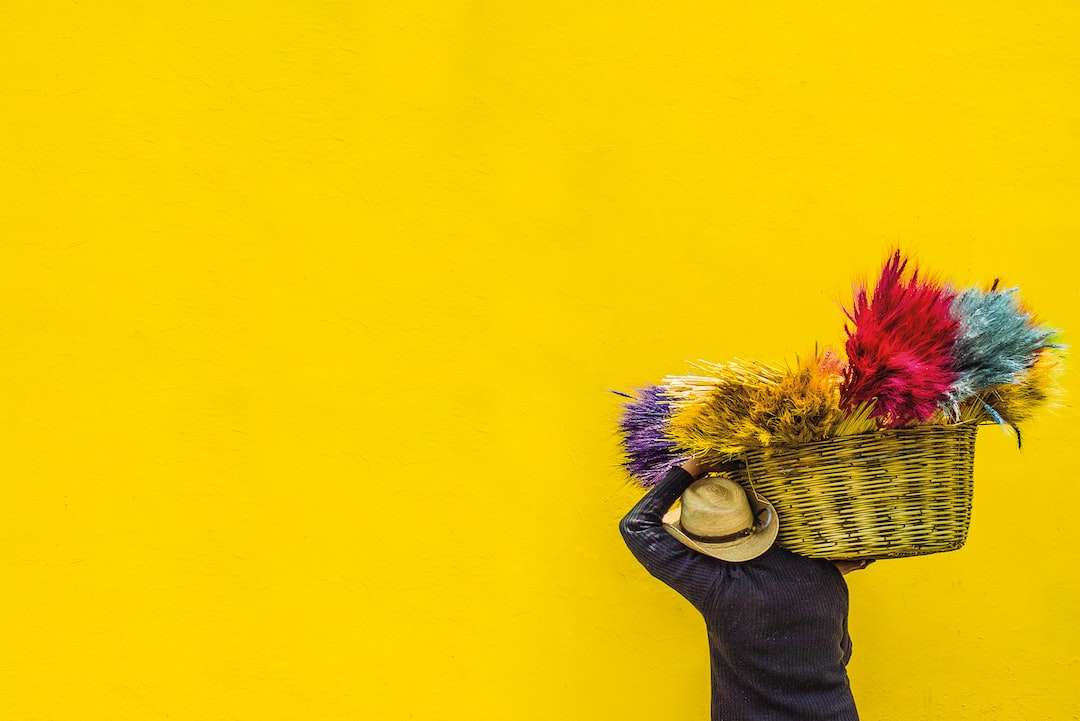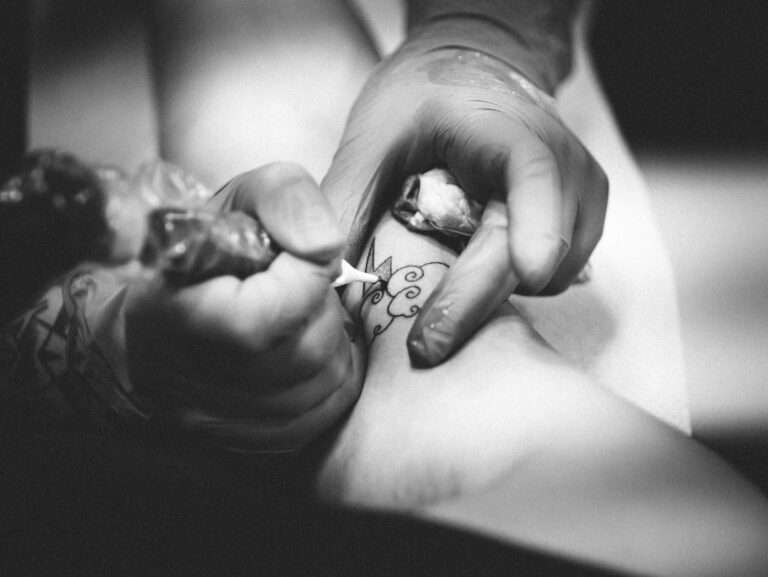The Art of Tattoo Color Symbolism: Exploring the Meanings Behind Your Ink

Tattoos have been a form of self-expression for centuries, and one of the key elements that can make a tattoo truly stand out is color. Color plays a vital role in tattoo art, as it can enhance the design, evoke emotions, and convey symbolic meanings. Whether it’s a vibrant red rose, a serene blue ocean, or a bold black tribal design, the colors used in tattoos can have a profound impact on both the wearer and the viewer. In this article, we will explore the power of color in tattoos, the symbolic meanings behind common tattoo colors, how to choose the right colors for your tattoo, and much more.
Understanding the Power of Color in Tattoos
Color has a powerful effect on the human psyche. It can evoke emotions, create moods, and even influence behavior. In tattoo art, color can enhance or detract from a design depending on how it is used. Vibrant and bold colors can make a tattoo pop and catch the eye, while muted or monochromatic colors can create a more subtle and understated effect. The choice of color can also affect the overall composition and balance of a tattoo design.
The Symbolic Meanings Behind Common Tattoo Colors
Different colors have different symbolic meanings, and these meanings can vary across cultures and historical periods. Red is often associated with passion, love, and strength. Blue is often associated with calmness, tranquility, and spirituality. Green is often associated with nature, growth, and fertility. Yellow is often associated with happiness, joy, and optimism. Black is often associated with power, mystery, and strength. White is often associated with purity, innocence, and spirituality.
How to Choose the Right Colors for Your Tattoo
When choosing colors for your tattoo, there are several factors to consider. First and foremost, you should choose colors that resonate with you personally. Think about what emotions or meanings you want your tattoo to convey, and choose colors that align with those feelings. You should also consider the placement of your tattoo and how the colors will interact with your skin tone. Some colors may fade or change over time, so it’s important to choose colors that will age well. Additionally, you should consider the overall composition and balance of your tattoo design, and choose colors that complement each other.
The Cultural Significance of Color in Tattooing
Color plays a significant role in tattooing across different cultures. In some cultures, certain colors are associated with specific meanings or beliefs. For example, in Chinese culture, red is considered a lucky color and is often used in tattoos to symbolize good fortune and prosperity. In Maori culture, black is a sacred color and is often used in traditional tattoos to symbolize strength and protection. In Indian culture, henna tattoos are often created using brown or reddish-brown dye, which symbolizes fertility and good luck.
The Psychology of Color and Its Impact on Your Tattoo

Color can have a profound impact on our mood and emotions. Different colors can evoke different feelings and reactions. For example, warm colors like red and orange can create a sense of energy and excitement, while cool colors like blue and green can create a sense of calmness and relaxation. When choosing colors for your tattoo, it’s important to consider how they will make you feel and how they will resonate with your personality.
Exploring the Spiritual Significance of Tattoo Colors
Colors have long been associated with spiritual meanings and symbolism. In many spiritual traditions, each color is believed to have its own unique energy or vibration. For example, red is often associated with passion and vitality, while blue is associated with intuition and spirituality. When incorporating color into your tattoo design, you can choose colors that align with your spiritual beliefs or that represent qualities or energies that you want to embody.
The Evolution of Color Symbolism in Modern Tattooing
Color symbolism in tattooing has evolved over time, influenced by cultural shifts and advancements in tattooing techniques. In the past, certain colors may have been limited or not widely available, leading to different color choices and meanings. With the advent of modern tattooing techniques and a wider range of available colors, tattoo artists now have more freedom to explore and experiment with color symbolism in their designs.
The Importance of Color Contrast and Composition in Tattoos
Creating a visually appealing tattoo involves considering color contrast and composition. Color contrast refers to the difference between light and dark colors, as well as complementary or contrasting colors. By using contrasting colors, you can create a dynamic and eye-catching design. Composition refers to how the colors are arranged within the tattoo design. A well-composed tattoo will have a balanced distribution of colors that enhances the overall aesthetic.
Using Color Symbolism to Tell Your Personal Story Through Tattoo Art
Tattoos can be deeply personal and meaningful, and color symbolism can be a powerful tool for telling your story through tattoo art. By choosing colors that represent significant moments, emotions, or beliefs in your life, you can create a tattoo that is not only visually striking but also deeply meaningful to you. Whether it’s a vibrant sunset to represent a new beginning or a black rose to symbolize overcoming adversity, color can help bring your personal narrative to life.
Color is an essential element in tattoo art, as it can enhance the design, evoke emotions, and convey symbolic meanings. By understanding the power of color in tattoos and considering factors such as personal resonance, cultural significance, and color contrast and composition, you can create a tattoo that is not only visually stunning but also deeply meaningful. Whether you choose vibrant and bold colors or subtle and muted tones, the colors you choose for your tattoo can make it truly unique and reflective of your personal story.
If you’re interested in exploring the symbolism behind tattoo colors, you might also find this article on the symbolism of the moon fascinating. The moon has long been associated with various meanings and interpretations, ranging from femininity and intuition to cycles of life and transformation. Understanding the symbolism of the moon can add depth and significance to your tattoo choices. Check out this article to delve into the captivating world of lunar symbolism.
FAQs
What is tattoo color symbolism?
Tattoo color symbolism is the use of different colors in tattoos to convey certain meanings or emotions.
What are some common tattoo colors and their meanings?
Black is often used for outlining and shading, and can represent strength, power, and mystery. Red can symbolize passion, love, and anger. Blue is associated with calmness, loyalty, and trust. Green can represent growth, nature, and envy. Yellow is often used for happiness, optimism, and friendship. Purple can symbolize royalty, luxury, and spirituality.
Do different cultures have different meanings for tattoo colors?
Yes, different cultures may have different meanings for tattoo colors. For example, in Chinese culture, red is associated with good luck and prosperity, while in Western culture, it is often associated with love and passion.
Can the placement of a tattoo affect its meaning?
Yes, the placement of a tattoo can affect its meaning. For example, a tattoo on the wrist may symbolize strength and determination, while a tattoo on the back of the neck may represent independence and freedom.
Is there a right or wrong way to use tattoo color symbolism?
There is no right or wrong way to use tattoo color symbolism, as it is ultimately up to the individual getting the tattoo to decide what colors and meanings they want to incorporate. However, it is important to be aware of cultural and societal associations with certain colors to avoid unintentionally offending others.





